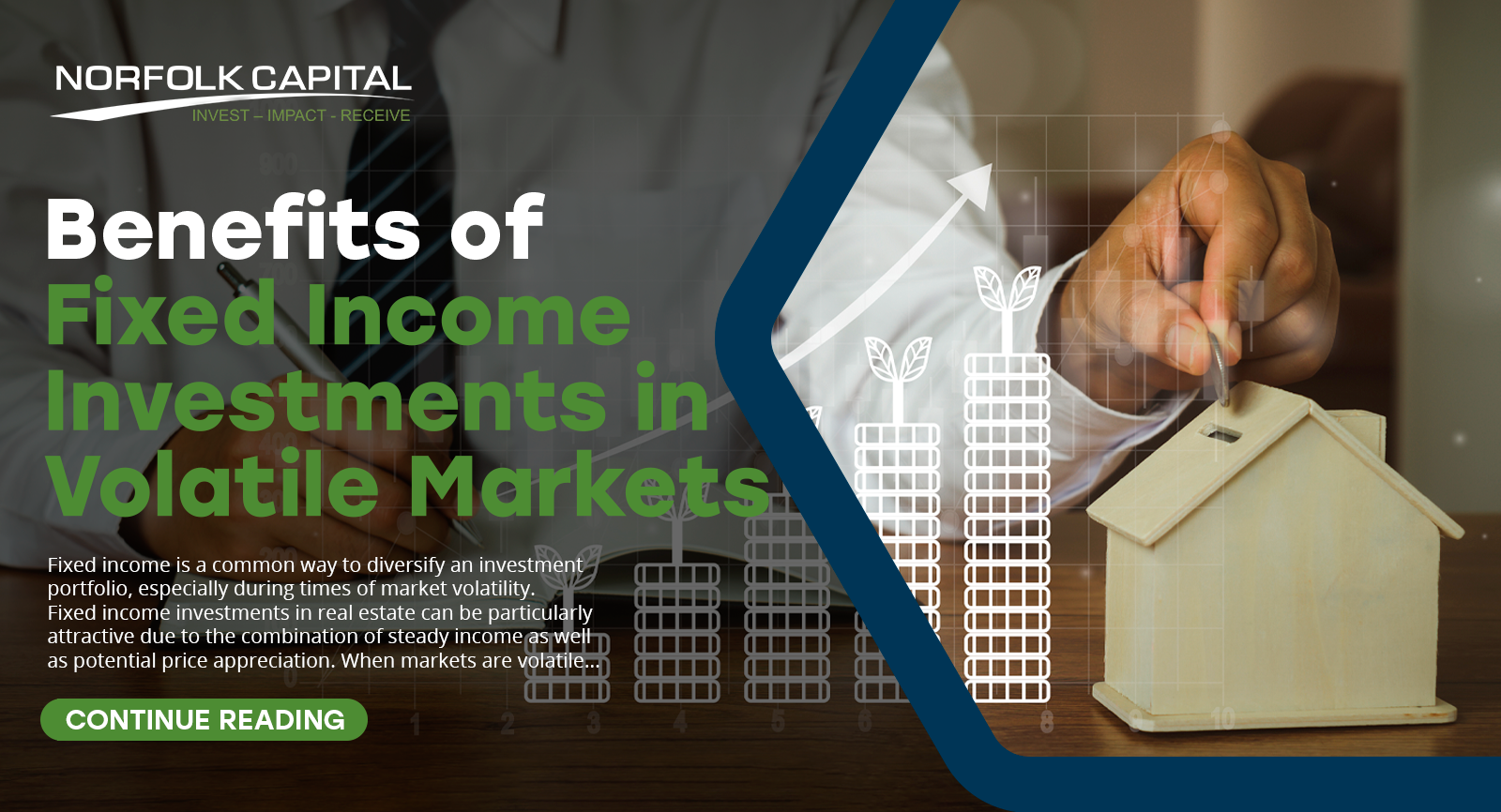
Benefits of Fixed Income Investments in Volatile Markets
Fixed income is a common way to diversify an investment portfolio, especially during times of market volatility. Fixed income investments in real estate can be particularly attractive due to the combination of steady income as well as potential price appreciation. When markets are volatile, fixed real estate income can offset some of that risk due to its inherently less volatile nature.
According to a J.P. Morgan Asset Management investment outlook for 2023, private real estate assets are “well positioned to deliver stable cash flows and public market diversification, even if capital values decline.” In addition, the report suggests infrastructure is a way to protect a portfolio against inflation.
There are different products through which investors can generate fixed real estate income, one of which is commercial real estate debt funds. Institutional investors are increasingly flocking to these funds as a strategy to produce income and offset losses elsewhere. These funds are looked to for solid risk-adjusted returns coupled with better yields vs. government securities.
Commercial debt funds rose to popularity in the wake of the financial crisis of 2008-09, since which time issuance has ballooned. Debt fund issuance, specifically in commercial real estate loans, approached $70 billion in 2018, up from $32 billion in 2016, as per Mortgage Bankers Association (ABA) data. This represented roughly 10% of the total amount of CRE loans issued that year.
With CRE loans, investors get the best of both worlds, including equity-like returns with the downside protection that fixed income has to offer. Indeed, investors find themselves in a sweet spot between the equity and debt markets, which is especially beneficial during times of heightened volatility. The loan performance inside debt strategies has proven itself over market cycles, continuing to deliver yield even throughout market volatility.
Meanwhile, volatility does not seem to be going away anytime soon. Russia’s war in Ukraine, continues to persist, fueling volatility in global markets. Soaring inflation remains a headwind in the economy, ignited by supply chain issues in the wake of the health crisis. Worse, inflation is showing little sign of abating anytime soon. As a result, investors are increasingly looking for the benefits that fixed real estate income can provide during times of market volatility.
Let’s also take a look at commercial bridge loans, another source of fixed income in volatile markets for investors. With bridge loans, investors are attracted to the relatively lower risk vs. other asset classes and often times higher yields than can be earned even in other fixed income circles.
As the name suggests, bridge loans ‘bridge the gap’ for builders when traditional bank financing isn’t ideal or even an option. Cash flow is king in real estate, and oftentimes market participants need access to funds for a closing or to keep operations going. Bridge loans help with that. Lenders hand-pick assets that are located close by so they can keep a watch on things.
The way these loans are typically structured vs. government backed conventional loans is with a lower loan-to-value ratio and a higher interest rate. In addition, bridge loans generally offer a low correlation to market volatility. It is not uncommon to experience steady returns in the 9–10% range from a savvy bridge lender.
